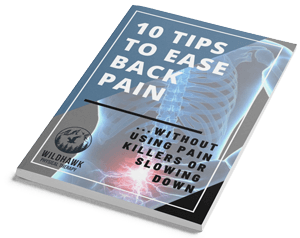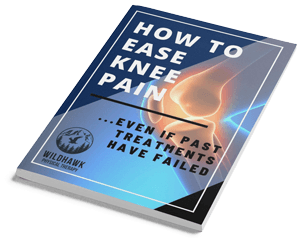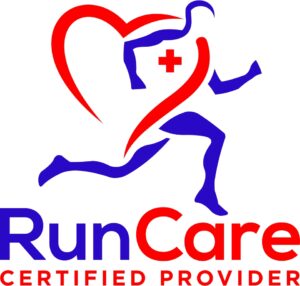
Diastasis recti, the separation of the rectus abdominis muscles along the midline, is a condition that can lead to core instability, discomfort, and even chronic pain. The condition frequently occurs during or after pregnancy but can also result from improper body mechanics or abdominal strain. For those experiencing diastasis recti pain, physical therapy for diastasis recti offers effective, tailored solutions that restore abdominal muscle function and improve quality of life. Residents in Asheville, NC, can find expert care through specialized physical therapy programs, where individualized rehabilitation plans are designed to meet each patient’s unique needs.
This comprehensive guide covers the condition, its symptoms, and various strategies at home and with professional care that alleviate pain and promote recovery.
What Is Diastasis Recti?
Diastasis recti occurs when the connective tissue of the linea alba weakens or stretches, causing the rectus abdominis muscles to separate and form a visible gap called the inter-rectus distance. Common causes include pregnancy, where increased intra-abdominal pressure stretches the abdominal muscles, as well as factors like improper lifting, high-impact activities, genetic predisposition, and poor posture or alignment. These factors weaken the core and affect trunk movement, emphasizing the importance of prevention and early management.
Diastasis recti is a common condition among individuals during pregnancy and the postpartum period, affecting approximately 60% of pregnant people. While the condition often resolves naturally within eight weeks after delivery, it persists in about 40% of individuals at six months postpartum. Early detection and intervention are essential for preventing long-term complications and restoring core stability.
Signs and Symptoms of Diastasis Recti
The symptoms of diastasis recti are often both visible and physically limiting, impacting daily activities and overall core strength. Recognizing the signs early is essential for effective management, as untreated diastasis recti can lead to complications such as chronic pain, postural issues, and reduced functional capacity. By knowing the common symptoms and how they manifest, individuals can take proactive steps to seek timely intervention and begin their recovery journey.
- Bulging of the Abdomen: A midline bulge, especially during movements like coughing or sitting up, is a hallmark sign. A feeling of pressure or heaviness in the abdomen often accompanies this visible gap.
- Core Weakness: A weakened core impairs functional capacity, making everyday tasks like lifting or bending more challenging. This lack of strength also leads to poor posture and increased reliance on other muscle groups for support.
- Lower Back Pain and Pelvic Instability: With weakened transverse abdominis muscles and poor pelvic stability, compensatory strategies strain the back, causing lumbo-pelvic pain. This imbalance can lead to chronic discomfort, making movement and standing for long periods difficult.
- Pelvic Pain with Constipation: Increased intra-abdominal pressure can lead to discomfort in the pelvic floor, affecting digestion and bowel movements. This discomfort often worsens with activities that place additional strain on the abdominal muscles, such as heavy lifting or prolonged sitting.
Addressing these symptoms early through diastasis recti physical therapy is essential for preventing long-term complications.
Why Pain Occurs with Diastasis Recti
Pain associated with diastasis recti arises from a combination of core instability, altered abdominal muscle function, and biomechanical imbalances. When the rectus abdominis muscles separate, it disrupts the synergy of deep core muscles, such as the transverse abdominis and multifidus, essential for stabilizing the spine and pelvis. This lack of stability compromises the body’s ability to manage intra-abdominal pressure, causing discomfort during everyday activities like lifting, twisting, or even simple respiration.
Poor posture and inefficient breathing patterns, such as posterior pelvis tilting or a collapsed rib cage, place excessive strain on the lower thoracic and lumbar regions, further intensifying the pain. Without timely intervention, this pain can become chronic, affecting both mobility and quality of life. Physical therapy offers a targeted approach to alleviate these issues by focusing on postural awareness, core stabilization, and safe, effective exercises tailored to individual needs.
Diagnosing Diastasis Recti

Accurate diagnosis is key to effective treatment for diastasis recti. Professional assessment helps determine the extent of muscle separation, guiding the development of a tailored treatment plan. Early detection and proper diagnosis are essential for preventing complications and ensuring optimal recovery.
Self-Assessment Techniques
Identifying diastasis recti early can help you take the right steps toward recovery. While seeing a professional is the best way to get an accurate diagnosis, you can perform a simple self-assessment at home to check for signs of the condition. By following these easy techniques, you can determine if muscle separation might occur and take appropriate action. Here’s how to do a basic abdominal check for diastasis recti at home.
- Positioning: Lie flat on your back with your knees bent and feet flat on the floor, ensuring your spine remains neutral. This alignment helps reduce any strain on your lower back during the examination.
- Palpation: Place your fingers above and below the navel, applying gentle pressure. This allows you to feel any separation or gap between the abdominal muscles.
- Core Engagement: Lift your head slightly off the floor, engaging your core muscles while you feel for any gap or ridge along the midline of your abdomen. This is known as palpable separation and indicates diastasis recti if a noticeable gap exists.
While self-assessments provide a preliminary understanding, they cannot measure the inter-rectus distance accurately.
Professional Diagnosis
Physical therapists provide a comprehensive clinical examination to evaluate muscle strength, postural alignment, and functional impairments. Board-certified clinical specialists use imaging diagnosis, muscle strength evaluations, and posture assessments to develop tailored treatment plans. This thorough approach ensures an accurate diagnosis, guiding the development of an effective recovery plan for diastasis recti. Early professional evaluation can prevent complications and ensure a faster, more successful recovery process.
Physical therapists assess diastasis recti by measuring the gap between the rectus abdominis muscles, often using a “finger-width” method. A gap of one to two finger-widths is generally manageable and may not lead to significant issues. However, a separation larger than two finger-widths can contribute to core weakness, back pain, and other symptoms, making professional evaluation and treatment critical for recovery.
Physical Therapy Methods for Pain Relief
Physical therapy for diastasis recti emphasizes strengthening the abdominal muscles, reducing pain, and restoring functional capacity. Through targeted exercises, physical therapists help address core weakness, improve muscle coordination, and enhance overall stability. The goal is to reduce discomfort and prevent complications by promoting healing and supporting long-term recovery. With a tailored approach, physical therapy provides effective solutions for pain relief and improved mobility.
Core Stabilization Techniques
Core stabilization is a key component in treating diastasis recti, focusing on strengthening the muscles that support the spine and pelvis. These exercises restore balance, reduce pain, and prevent further muscle separation. Here are some effective core stabilization techniques in physical therapy to improve abdominal function and promote long-term recovery.
- Abdominal Bracing: This isometric abdominal contraction activates the transverse abdominis, helping to strengthen the deep core muscles and promote a neutral spine. This exercise is essential for building stability in the abdominal wall and improving overall posture.
- Pelvic Tilts: Gentle pelvic tilts engage the core muscles while reducing strain on the rectus abdominis. This simple movement helps to activate the pelvic floor and lower abdominal muscles, contributing to better core stability and reducing discomfort.
- Deep Core Stability Exercise Program: These exercises target the inner unit muscles, such as the diaphragm, transverse abdominis, and pelvic floor. By integrating these muscle groups, the program enhances postural control, supports the spine, and helps alleviate pain associated with diastasis recti.
Pelvic Floor Exercises
Pelvic floor exercises are important in managing diastasis recti by improving pelvic stability and supporting core strength. Strengthening the pelvic floor can reduce lumbo-pelvic pain and enhance overall function. Below are two key pelvic floor exercises commonly used in physical therapy to address diastasis recti and promote healing.
- Pelvic Floor Contraction: Exercises like Kegels strengthen the pelvic floor muscles, vital in maintaining pelvic stability and reducing lumbo-pelvic pain. Strengthening these muscles helps support the abdominal wall and improves overall core function.
- Neuromuscular Electrical Stimulation: This technique, often used by pelvic floor physiotherapists, involves electrical impulses to stimulate deep core muscles. By activating these muscles, neuromuscular electrical stimulation helps improve muscle strength, restore function, and promote recovery from diastasis recti.
Manual Therapy and Soft Tissue Techniques
Manual therapy and soft tissue techniques are essential for relieving pain and improving mobility in individuals with diastasis recti. These hands-on approaches help release tension, enhance blood flow, and promote healing in the affected areas. Techniques such as massage and myofascial release, combined with postural training, reduce strain on the abdominal and pelvic regions, supporting recovery and restoring functional movement.
- Massage and Myofascial Release: These hands-on techniques help alleviate muscle tension and improve blood circulation, reducing pain and promoting healing. They target tight or restricted areas, helping to restore mobility and support the body’s natural recovery processes.
- Postural Training: Correcting dynamic and static postures is key to reducing strain on the abdominal and pelvic regions. This training improves postural awareness and alignment, which helps prevent further injury, supports the spine, and alleviates discomfort associated with diastasis recti.
At-Home Pain Relief Strategies
Managing diastasis recti pain at home is possible with the right techniques and lifestyle adjustments. Individuals can alleviate discomfort and support the healing process by incorporating safe exercises, proper body mechanics, and supportive tools. These strategies complement professional care and provide an accessible way to continue recovery outside of therapy sessions.
Safe Exercises to Perform at Home
Incorporating safe exercises into your daily routine is important in managing diastasis recti. These exercises help strengthen the core and pelvic floor while avoiding excessive strain on the abdominal muscles. Here are some exercises you can perform at home to improve stability, control, and overall recovery:
- Modified Bridges: This exercise strengthens the core and pelvic floor while maintaining proper alignment. It activates the glutes and lower back muscles to enhance stability without putting undue stress on the abdominal muscles.
- Supine Marches: Supine marches improve core control without overloading the abdominal wall. Alternating leg movements while keeping the lower back neutral builds functional strength and promotes better coordination.
- Diaphragmatic Breathing: Diaphragmatic breathing helps regulate intra-abdominal pressure and supports postural control. Engaging the diaphragm fully encourages optimal breathing patterns and enhances the pelvic floor and core stability.
Using Supportive Tools
Supportive tools can play a helpful role in managing diastasis recti by providing additional stability and reducing strain on the abdominal wall. These tools can be particularly beneficial when performing daily activities or exercises.
- Abdominal Binding: Elastic or non-elastic binders offer external support to the abdominal wall, helping to promote proper alignment and stability. These supports assist in reducing strain during physical activities and improve posture.
- Support Garments and Taping: These tools enhance proprioception and alleviate strain during movement. They provide additional stability to the abdominal and pelvic regions, helping reduce discomfort and aid recovery.
Activities to Avoid
When managing diastasis recti, avoiding activities that strain the abdominal muscles or increase intra-abdominal pressure is essential, as these can worsen the condition and delay recovery. Key activities to avoid include crunches, sit-ups, heavy lifting or twisting, and breath-holding during exercises. Adopting safe exercise strategies and supportive tools can help manage pain and promote healing at home. Working with a physical therapist can also guide to ensure proper technique and prevent further strain.
Benefits of Physical Therapy at WildHawk PT

At WildHawk Physical Therapy, patients receive expert care tailored to their specific needs to address the discomfort and functional limitations caused by diastasis recti. The clinic offers individualized treatment plans focusing on restoring core strength, improving posture, and reducing pain. With a comprehensive approach to recovery, patients can experience lasting results and regain mobility and confidence. If you’re looking for diastasis recti physical therapy near me, or if you’re interested in physical therapy diastasis recti, contact us to schedule a consultation and learn how we can help you achieve your goals.
Customized Treatment Plans
Individualized rehabilitation programs are developed based on subjective history, functional assessments, and patient goals. This personalized approach ensures optimal recovery. Each treatment plan is carefully designed to address the patient’s specific challenges, allowing for a more effective path to healing. Ongoing adjustments to the plan ensure that progress is maintained and goals are consistently met.
Expert Care for Asheville Residents
Led by board-certified clinical specialists, expert physical therapy is available for diastasis recti and related conditions like lumbo-pelvic pain or pelvic pain with constipation. Professionals with extensive experience in pelvic health provide specialized care that targets both the root causes and symptoms of these conditions, ensuring comprehensive treatment. Personalized therapy plans address each individual’s unique needs, promoting long-term relief and improved quality of life.
Ongoing Support for Long-Term Results
The clinic emphasizes follow-up care, offering tools for maintaining core stability, preventing future injuries, and enhancing quality of life. With ongoing support, patients can continue strengthening their muscles and improving their mobility after their initial therapy sessions. This long-term commitment helps ensure that recovery is maintained and the risk of re-injury is minimized.
Conclusion
Physical therapy is a proven path to recovery for diastasis recti, addressing pain, restoring function, and improving core strength. Whether you’re seeking diastasis recti physical therapy near you, tailored treatments, expert guidance, and continued support can help you achieve lasting results. With a personalized approach, you can experience a successful recovery and return to a pain-free, active lifestyle. Starting therapy early can help prevent further complications and promote faster healing. Committing to ongoing exercises and lifestyle adjustments ensures long-term improvements and prevents recurrence.
FAQs
How can physical therapy help diastasis recti pain?
Physical therapy addresses diastasis recti pain by strengthening the transverse abdominis, correcting posture, and improving body mechanics through a deep core stability exercise program.
How long does it take to see results with physical therapy?
Results vary, but many patients notice reduced pain and improved core function within a few weeks of consistent treatment.
Are there risks in delaying treatment for diastasis recti?
Delaying treatment can lead to worsening symptoms, chronic pain, or complications like hernias. Early intervention ensures better outcomes and prevents further strain on the abdominal muscles.










